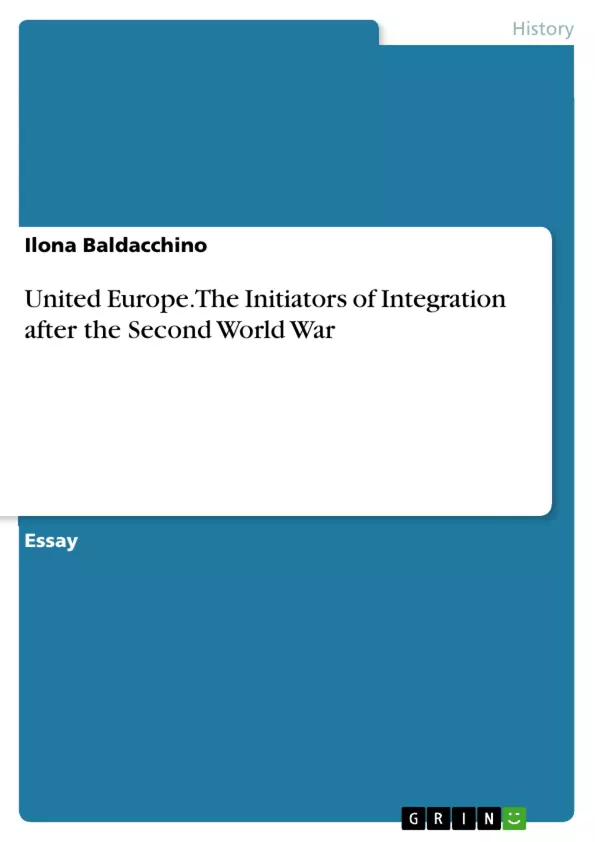The speech of Robert Schuman shows the gradual aspect of building a new continent that was disrupted after a harsh war like World War II. As it states, there was no intention to build the continent all at once. This speech shows that after a war like WWII, the European countries needed to find a way to secure peace for the entire continent after a lot of devastation that had occurred. The idea was to promote trade and establish peace by bringing together European nation states, to create one goal…Unity.
Inhaltsverzeichnis (Table of Contents)
- The Run Up To The Schuman Declaration
- 1 Extract From The Schuman Declaration - 9 May 1950
- Schuman Declaration And After
- The Integration Process Went On, And In April 1951, The Treaty Of Paris Was Signed
- In 1955, An Agreement Towards A Definitive Step In European Construction Happened
- During The Years, The EU Enlarged From The Founding Six To Twenty-Eight Countries
Zielsetzung und Themenschwerpunkte (Objectives and Key Themes)
This text aims to provide a historical account of the initial steps towards European integration, focusing on the motivations, key figures, and processes involved. It examines the genesis of the idea of a united Europe, tracing its roots to the aftermath of World War II and the desire to prevent future conflict.
- The role of key figures in shaping the early stages of European integration
- The influence of World War II on the drive towards European unity
- The significance of the Schuman Declaration and its impact on European integration
- The development of institutions and treaties that paved the way for the European Union
- The importance of educating EU citizens about the history of integration
Zusammenfassung der Kapitel (Chapter Summaries)
- This chapter discusses the context surrounding the Schuman Declaration, highlighting the desire to avoid a return to war in Europe following World War II. It explores the views of prominent figures like Winston Churchill and Walter Lipgens, who emphasized the need for a united Europe to ensure peace and security. The chapter also discusses the economic and political considerations that drove the initial push for integration, particularly in the aftermath of the war.
- This section focuses on the Schuman Declaration itself, presenting an excerpt from the speech that emphasizes the gradual approach to building a united Europe. It outlines the key objectives of the declaration, including the promotion of trade and the establishment of peace through collaboration between European nations.
- This chapter examines the period following the Schuman Declaration, emphasizing the significance of the declaration in initiating the contemporary process of European integration. It discusses the contributions of various key figures, including Robert Schuman, Konrad Adenauer, Jean Monnet, and Altiero Spinelli, who shared a vision of a peaceful, unified, and prosperous Europe.
- This section details the signing of the Treaty of Paris in 1951, which established the European Coal and Steel Community (ECSC). It explains the objectives of the ECSC, focusing on the integration of coal and steel markets across the six founding member states. The chapter also highlights the ECSC's role as a precursor to the European Economic Community and Euratom.
- This chapter recounts the 1955 Messina Conference, which marked a significant step towards European construction. It discusses the subsequent signing of the Treaty of Rome in 1957, which established the European Economic Community (EEC) and the European Atomic Energy Community (Euratom). The chapter explains the key objectives of both communities, emphasizing the EEC's focus on creating a common market and Euratom's emphasis on research in the field of atomic energy.
- This chapter discusses the expansion of the European Union from the original six member states to twenty-eight, highlighting the challenges and changes brought about by these enlargements. It emphasizes the importance of educating EU citizens about the history of integration, arguing that this knowledge can help foster a sense of belonging and understanding among citizens.
Schlüsselwörter (Keywords)
The main keywords and focus topics of the text include European integration, World War II, Schuman Declaration, ECSC, EEC, Euratom, European Union, Treaty of Paris, Treaty of Rome, and EU citizenship. These terms reflect the core concepts and historical events explored in the text, highlighting the development and evolution of the European Union.
- Quote paper
- Ilona Baldacchino (Author), 2014, United Europe. The Initiators of Integration after the Second World War, Munich, GRIN Verlag, https://www.hausarbeiten.de/document/289202


